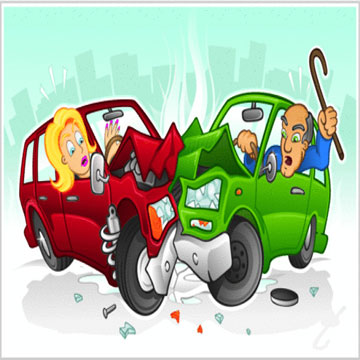 Chandigarh:
Chandigarh: India has one of the world's highest accident rates, yet nothing is done to correct the driving pattern of young people who are the cause of most accidents and also its victims, a study by an expert concludes.
With more youth in the country getting behind the wheel, the study has found that accidents are mostly caused by impulsiveness, sensation-seeking, driving anger, vengeance and even proneness to boredom.
Among young drivers, gender differences are evident among male and female drivers,according to the study by Chandigarh-based psychologist and international road safety expert Guneet Singh.
"While women are prone to sensation-seeking - a tendency among women to get a feeling of a high or a thrill - men are impulsive and show more vengeance while driving," Guneet, who was recently appointed road safety specialist for a World Bank project in Rajasthan, said here.
"Every day, nearly 3,400 people get killed on the world's roads (World Health Organisation, WHO, 2013). Numerous studies have focused on the engineering causes of road fatalities, as well as the technical shortcomings in the vehicles involved, (but) the third component -- the driver, who has been found to be the major component of road fatalities -- is often ignored," Guneet pointed out.
"The psychological aspect of the driver needs to be looked into. Interplay of various psychological variables like driving anger, vengeance, boredom-proneness and sensation-seeking, contribute in a major way to unsafe driving," she said in her study.
Guneet sampled 823 young drivers, males and females, in the tri-city area of Chandigarh, Panchkula and Mohali in her study on the behavioral patterns of drivers. The drivers sampled, in the age group of 18-23, included traffic offenders and non-offenders.
"The findings of this study revealed positive correlation of all the variables among various groups of drivers. The regression analysis revealed impulsiveness as a major predictor followed by sensation-seeking, vengeance, driving anger and boredom-proneness," said Guneet, who has been a voluntary Traffic Marshall with the Chandigarh Traffic Police since 2014.
"Significant gender differences were found on unsafe driving, boredom-proneness and sensation-seeking with males scoring higher than
their female counterparts. Traffic offenders were more prone to unsafe driving," the study revealed.
Those driving four-wheelers, mostly cars, showed greater tendency towards unsafe driving while those on two-wheelers were more prone to vengeance.
Guneet, who is currently posted in Jaipur for the $230 million Rajasthan Road Sector Modernisation Project funded by the World Bank, said that greater emphasis needs to be put on the behavior of drivers, especially from a young age, to make roads in the country safer.
Author of "Drive Safe Stay Smart: A Parent's Guide to Safe Driving for Smart Kids of a Smart City", in which she guides parents on how they can impart good driving habits to their children, Guneet said: "Road crashes are taking a massive toll of human life and property in our country and has attained epidemic proportion that needs to be tackled through a concerted multi-sectoral approach to prevent road fatalities."
"Parents are a child's first teachers. Children watch the adults around them and emulate their behavior, including while driving. It is essential that parents should correct their own driving behavior to instill the right behavior in their children," she pointed out.
With over 15 deaths an hour, most of them young, and 130,000 deaths annually, India has the dubious distinction of having overtaken China to have the world's worst road traffic accident rate.
In his foreword for Guneet's book, Mark King of the Centre for Accident Research and Road Safety, Queensland University of Technology, writes: "Though increased motorisation is an indicator of country's economic growth, but it comes at a cost, and too often that cost is measured in lives lost and injuries sustained."
"The new drivers of all ages lack role models and it is time to ensure that techniques for fostering better driver behavior catch up with these developments on roads, law and policing," he added.
 Chandigarh: India has one of the world's highest accident rates, yet nothing is done to correct the driving pattern of young people who are the cause of most accidents and also its victims, a study by an expert concludes.
Chandigarh: India has one of the world's highest accident rates, yet nothing is done to correct the driving pattern of young people who are the cause of most accidents and also its victims, a study by an expert concludes.